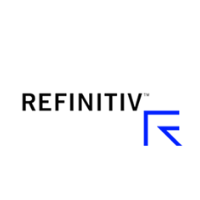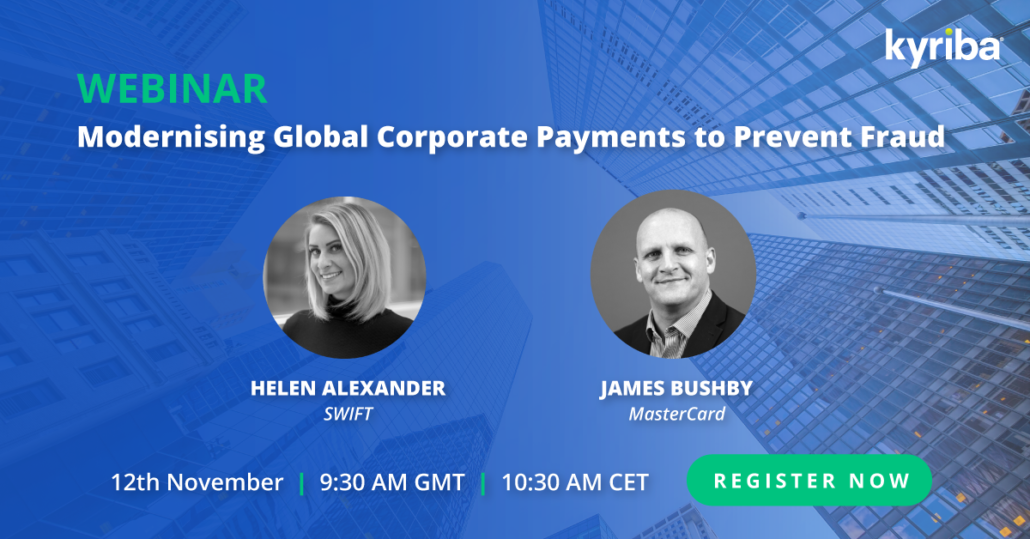Identity fraud, COVID-19 and the Pivotal role of Digital Identity
16-11-2020 | treasuryXL | Refinitiv |
Financial crime and identity fraud: fueled by the digital revolution
As digital connectivity continues to redefine every aspect of our lives, quick, seamless digital experiences have come to embody our new normal. This digital revolution is being driven by a host of interconnected factors, including a changing regulatory landscape and emerging technology that creates an environment with low barriers to entry. Other factors are also at play, including ever-increasing connectivity between entities, increased cross-border activity, and tech-savvy consumers who demand choice, fairness, flexibility, and an omnichannel experience across all areas of their lives. Consumers accustomed to digital retail experiences expect the same 24/7/365 digital experience in other areas of their lives, such as banking and wealth management. Moreover, they increasingly expect tailored, highly personalized experiences.
The result of enhanced connectivity, convenience and increased consumer engagement is a real need to protect against highly sophisticated financial criminals who are harnessing the same digital capabilities to defraud both organizations and individuals. Put simply, the technological advancements that make our lives easier can also benefit criminals, making it easier for them to commit financial crime. According to the World Economic Forum, fraud and financial crime constitute a trillion-dollar industry, and private companies spent approximately US$8.2 billion on anti-money laundering (AML) controls alone in 2017.
Refinitiv’s own research, presented in our 2019 report, Innovation and the fight against financial crime, confirms that financial crime is indeed pervasive and costly. Our findings were collated from a survey of more than 3000 managers with compliance-related responsibilities at large global organizations. We found that nearly three-quarters (72%) of respondents were aware of financial crime taking place in their global operations during the 12 months preceding the survey, even though the same companies spent an average of 4% of turnover on customer and third-party due diligence checks. Looking specifically at identity fraud, the Federal Bureau of Investigation (FBI) has revealed that synthetic identity fraud – where criminals manufacture a new identity using both legitimate and false information – is the fastest growing crime in the U.S.2
COVID-19 has upped the ant
Following the rapid spread of the epidemic , financial crime has accelerated as criminals have found new opportunities to exploit fear, uncertainty and desperation. The FBI provides various innovative examples relating to how criminals are using COVID-19 to defraud individuals, including government impersonators who aim to extract personal information for illegal purposes. And work-from-home fraud, in which victims are asked to send or move money, effectively becoming money mules and enabling criminals.
Forward-thinking banks and FIs are already beginning to accelerate their existing digital transformation programs to mitigate the higher levels of risk anticipated during and after the pandemic. In particular, we expect a significant uptick in the use of digital onboarding and digital identity solutions as more consumers are forced to transact online as a result of lockdown and social distancing requirements; choose to do so for fear of contracting or spreading the virus; and/or are seeking better security when asked to prove their identity.
Even before the pandemic, many firms were increasingly using digital innovation to fight financial crime, including digital identity solutions in the client identification space. Digital identity solutions offer fast, reliable digital identity verification and screening; transcend geographies; boost operational efficiency; and remove the human error factor. Moreover, digital identity helps financial institutions optimize compliance models, improve risk mitigation and protect customers from identity fraud. As the world grapples with the effects of the pandemic, banks and FIs have a real and immediate opportunity to review their systems and controls, while simultaneously accelerating digital transformation and moving away from old-school manual Know Your Customer (KYC) processes.
The far-reaching effects of identity theft
Organizations across the financial services industry are facing a range of common challenges, including rising competition, tightening margins, strict regulatory expectations, the need for greater operational efficiency, and pressure to reduce costs. There is the added fundamental requirement to ensure that the client experience is positive. Customer abandonment levels remain unacceptably high, with over half (56%) of consumers in the UK abandoning bank applications in 2018. Our research suggests that traditional KYC and due diligence processes – which can be time-consuming, inefficient and costly – have contributed to this.
While firms are increasingly aware of the need to ensure better experiences for clients, they also need to consider the ever-growing security threats such as large-scale data breaches, phishing and social engineering attacks. These crimes have made it easier for fraudsters to assume the identities of legitimate account owners via account takeover fraud. The impact of identity fraud is far-reaching, with victims experiencing both financial and psychological damage that can severely impact their behavior and future brand loyalty.
There is therefore an urgent need for banks and FIs to prioritize customer identity protection alongside the accepted need to ensure a positive experience. Many banks and FIs are not moving fast enough to address this issue – and need to become more aware of the wider social risks of identity fraud.
On a more positive note, a highly encouraging finding from our survey was that technology, including digital identity solutions, is increasingly able to help organizations fight back against financial crime while improving client relationships. A significant 94% of survey respondents agreed that the technology they use to detect financial crime is also enhancing customer engagement.
Digital identity: who can benefit?
Digital identity solutions continue to grow in popularity and offer numerous benefits to different industry participants, including retail banks and wealth managers.
Retail Banking
Retail banks, for example, can benefit from enhanced speed, efficiency and security when using digital onboarding and digital identity solutions during customer account opening, where it is necessary to verify and prove the identity of new customers who apply for new bank products and services. Digital identity is also invaluable for customer re-verification and authentication in instances where existing customers seek to make changes to their personal information.
Wealth management
Turning specifically to the wealth industry, the benefits are equally clear. The wealth arena is operating against a backdrop of unprecedented uncertainty as wealth transfer from baby boomers to millennials brings far-reaching changes to business models, in line with the expectation that a new generation requires new strategies and alternative data.
We commissioned research from global research and advisory firm Aite Group, which collated the findings from executive interviews with leading wealth management firms around the globe. The research found that 100% of respondents consider wealth transfer to be one of their top-three concerns. This report also revealed that financial advisors are becoming less product-focused and more relationship-oriented. As the wealth industry continues to shift away from products and towards services, the role of financial planning is taking center stage in the client/advisor relationship. Advisors are increasingly shifting focus from administrative duties and investment selection to client service. Digital identities can enable the shift of work from financial advisor to less expensive parts of the value chain, enabling them to concentrate on areas of added value.
A strong belief in technology
Our research shows that firms overwhelmingly believe in the power of technology in the fight against corruption: 97% of all respondents in our innovation survey said that technology can significantly help with financial crime prevention. There are of course still challenges in adopting digital solutions – nearly three-quarters (73%) reported concerns or obstacles when harnessing technological advancements to reduce risks and costs.
Respondents revealed that only about half (51%) of the data and legal documentation needed to carry out due diligence is obtained, but creating more difficulties, only 54% of this is in a digitized format. While remedies will take time, the digitization outlook is positive with 60% of organizations prioritizing automation and digitization for investment. Respondents indicated that spending on customer and third-party due diligence checks was expected to increase by 51% in the year following the survey, with technology being the biggest investment area. This data was gathered prior to the onset of COVID-19 and is expected to accelerate further as a result.
Digital identity solutions deliver diverse benefits
Digital identity solutions tick many boxes, including:
- Faster turnaround times. Using digital identity accelerates the pace of business, benefits all stakeholders, and means that banks and FIs can onboard and service more customers, more efficiently.
- Improved accuracy. Human error is unavoidable in manual identity procedures, but digital equivalents reduce manual keying errors, ultimately leading to better compliance.
- Better security. Old school security features, including passwords and knowledge-based authentication (KBA), not only cause high levels of frustration among clients, but are also often unsecure.
- More streamlined operational costs. Digital identity solutions boost efficiency levels, leading to more optimal deployment of resources and cost savings.
- A more favorable customer experience. Faster turnaround times, fewer touch points and a seamless digital experience all contribute to higher levels of customer satisfaction.
Refinitiv’s digital identification and verification solution, Qual-ID delivers in each of these areas. Built specifically for FIs, Qual-ID enables secure, digital identity verification and screening to boost compliance team efficiency. The solution focuses exclusively on consumer identity. Qual-ID helps with identity verification, document verification, enables anti-impersonation checks to be performed in a variety of robust yet consumer friendly ways.Qual-ID also leverages our market-leading World-Check Risk Intelligence Database to enable screening for financial crime risk within the same solution.
World-Check delivers accurate and reliable information compiled by hundreds of specialist researchers and analysts across the globe, adhering to the most stringent research guidelines as they collate information from reliable and reputable sources, including watch lists, government records and media searches. Incorporating World-Check capabilities into Qual-ID means that customers can verify identity against trusted sources, proof legal documents and screen for regulatory and financial risk – all in one transaction, via one API.
This unique combination of elements delivers a holistic digital identity and screening solution that assists our clients to comply with their legal and regulatory requirements at the time of onboarding.
Technology’s significant and tangible impact
Only 53% of respondents in our innovation survey confirmed that they conduct KYC checks on client identity during onboarding but worse still, only 46% of these checks are considered successful. While these figures are alarmingly low, our research did reveal that those organizations that use technology are almost twice as successful at performing KYC checks on client identity (47%) as their counterparts who don’t use technology (28%). These findings are a clear indication of the significant, tangible impact that the right technology can have in the client identity space, and ultimately in thwarting financial crime.
What is certain is that the digital transformation will continue to gather momentum – digital commerce is expected to grow globally at more than a 20% CAGR by 2022, reaching nearly US5.8 trillion in value. Alongside this growth, another certainty is that sophisticated criminals will continue to exploit emerging technology to advance their illicit activity, both now and after the COVID-19 pandemic. Forward-thinking banks and FIs must therefore harness the power of the best available technology and solutions to prevent financial crime and protect their customers – and digital identity solutions offer an immediate opportunity for success in this critical area.













 On Tuesday 27th March 2018, treasuryXL attended a seminar in Amsterdam organised by
On Tuesday 27th March 2018, treasuryXL attended a seminar in Amsterdam organised by  Most companies, regrettably, experience internal fraud. The financial value of the loss can be small or large – however the impact is the same. Internal investigations, procedural reviews, the time spent on detection, possible prosecution, together with the potential loss of reputation are significant factors above and beyond the monetary loss. Fraud can never be eliminated, but the threat can be minimised through proper procedures.
Most companies, regrettably, experience internal fraud. The financial value of the loss can be small or large – however the impact is the same. Internal investigations, procedural reviews, the time spent on detection, possible prosecution, together with the potential loss of reputation are significant factors above and beyond the monetary loss. Fraud can never be eliminated, but the threat can be minimised through proper procedures.

